Zinc
Zinc is a chemical element with the symbol Zn and atomic number 30. It is a bluish-white, lustrous metal with a low melting point and good corrosion resistance. Zinc is found in the Earth's crust and is essential for all living organisms, making it an important element for various biological processes.
Properties of Zinc
Some key properties of zinc include:
- Melting Point: 419.5°C
- Boiling Point: 907°C
- Density: 7.14 grams per cubic centimeter
- It is a relatively reactive metal, forming a protective layer of oxide on its surface when exposed to air.
Uses of Zinc
Zinc has a wide range of uses, some of which include:
- Galvanizing other metals to protect them from corrosion
- As an alloying agent in the production of brass and bronze
- In the production of various chemicals and pharmaceuticals
- In the manufacturing of batteries
- In the production of sunscreen, as zinc oxide provides protection against UVA and UVB rays
Zinc in Biology
Zinc is an essential trace element for all living organisms. It plays a crucial role in various biological processes, including:
- Enzyme function
- Immune system function
- Wound healing
- DNA synthesis
- Growth and development
Study Guide
Here are some key points to remember about zinc:
- Zinc is a chemical element with the symbol Zn and atomic number 30.
- It is a bluish-white, lustrous metal with a low melting point and good corrosion resistance.
- Zinc is used for galvanizing other metals, as an alloying agent, in chemical production, and in various other applications.
- In biology, zinc is essential for enzyme function, immune system function, wound healing, DNA synthesis, and growth and development.
- Zinc is found in the Earth's crust and is an important element for all living organisms.
◂Science Worksheets and Study Guides Fifth Grade. Elements, mixtures and compounds
Study Guide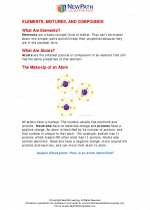 Elements, mixtures and compounds
Elements, mixtures and compounds  Activity Lesson
Activity Lesson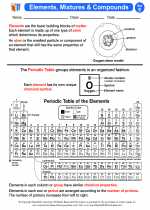 Elements, Mixtures and Compounds
Elements, Mixtures and Compounds  Worksheet/Answer key
Worksheet/Answer key Elements, mixtures and compounds
Elements, mixtures and compounds  Worksheet/Answer key
Worksheet/Answer key Elements, mixtures and compounds
Elements, mixtures and compounds  Worksheet/Answer key
Worksheet/Answer key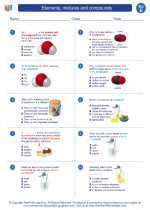 Elements, mixtures and compounds
Elements, mixtures and compounds  Worksheet/Answer key
Worksheet/Answer key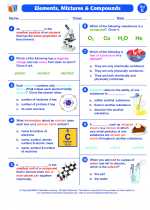 Elements, mixtures and compounds
Elements, mixtures and compounds  Vocabulary/Answer key
Vocabulary/Answer key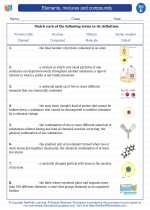 Elements, mixtures and compounds
Elements, mixtures and compounds  Vocabulary/Answer key
Vocabulary/Answer key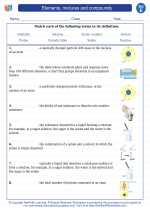 Elements, mixtures and compounds
Elements, mixtures and compounds 

 Activity Lesson
Activity Lesson
 Worksheet/Answer key
Worksheet/Answer key
 Worksheet/Answer key
Worksheet/Answer key
 Worksheet/Answer key
Worksheet/Answer key
 Worksheet/Answer key
Worksheet/Answer key
 Vocabulary/Answer key
Vocabulary/Answer key
 Vocabulary/Answer key
Vocabulary/Answer key

The resources above cover the following skills:
PHYSICAL SCIENCE (NGSS)
Matter and Its Interactions
Students who demonstrate understanding can:
Conduct an investigation to determine whether the mixing of two or more substances results in new substances.